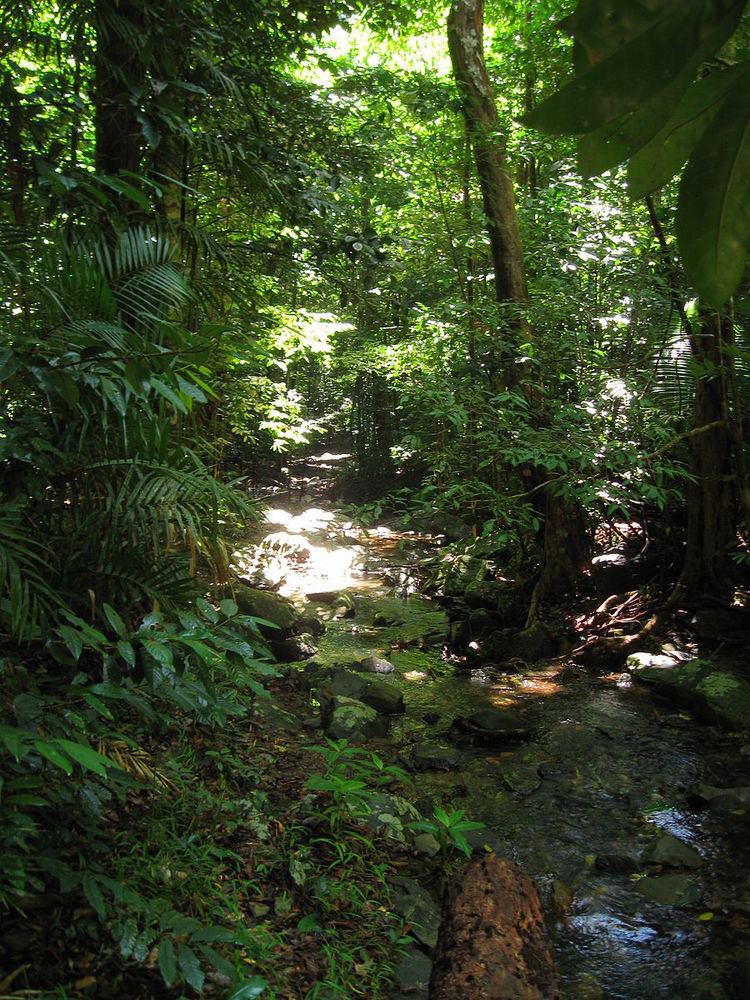Phone +61 7 4098 9126 | ||
 | ||
Address 2333 Cape Tribulation Rd, Cape Tribulation QLD 4873, Australia Similar Cape Tribulation - Queensland, Daintree National Park, Great Barrier Reef, Palm Cove - Queensland, Skyrail Rainforest Cableway | ||
Australia daintree rainforest hd
The Daintree Rainforest is a tropical rainforest region located on the north east coast of Queensland, Australia, north of Mossman and Cairns. At around 1,200 square kilometres (460 sq mi), the Daintree is the largest continuous area of tropical rainforest on the Australian continent. Along the coastline north of the Daintree River, tropical rainforest grows right down to the edge of the sea.
Contents
- Australia daintree rainforest hd
- Animals of the daintree rainforest
- Description
- Daintree Rainforest
- Exploring
- Daintree Important Bird Area
- References
Animals of the daintree rainforest
Description
The rainforest is named after Richard Daintree, an Australian geologist and photographer (1832-1878).
The area includes the Daintree National Park, some areas of State Forest, and some privately owned land, including a residential community of upwards of 5 people. Some of the privately owned land north of the Peninsula Range is being progressively purchased for conservation purposes under a $15million government scheme involving equal contributions from the municipal (Cairns Regional Council, which includes the former Douglas Shire council), State (Queensland) and Australian Federal governments. As of May 2011, 72% of the properties earmarked for buyback or compensation had been secured. These 'buyback' areas of tropical rainforest included 215 blocks of land purchased by the Queensland Parks and Wildlife Service, and 13 purchased by private conservation agencies.
The Daintree Rainforest contains 3% of the frog, reptile and marsupial species in Australia, and 90% of Australia's bat and butterfly species. 7% of bird species in the country can be found in this area. There are also over 12,000 species of insects in the rainforest. All of this diversity is contained within an area that takes up 0.1% of the landmass of Australia. Part of the forest is protected by the Daintree National Park and drained by the Daintree River. The roads north of the river wind through areas of lush forest, and have been designed to minimize impacts on this ancient ecosystem.
Daintree Rainforest
The tropical rainforest ecosystem of the Daintree Rainforest is one of the most complex on Earth. Its plant diversity and structural complexity is unrivalled on the Australian continent and represents the origins of its more familiar ‘Australian’ flora.
Millions of years ago, the Australian continent was warm and humid and rainfall was plentiful. During this time rainforest thrived in places such as the Ayers Rock region. As Australia became more arid, there were fewer and fewer places rainforests were able to survive. In the Daintree region, however the climate and topography were ideal, so the area became a last remaining refuge for rainforest. Within this refuge many species were able to live comfortably without reason to change. Their descendants that are still living today retained many of their ancestors' primitive characteristics, some dating back 110 million years.
One species in particular, Idiospermum australiense, commonly known as the idiot fruit, is one of the rarest and most primitive of the flowering plants. Its discovery in 1970 was arguably Australia’s most significant botanical find, greatly increasing scientists awareness of just how ancient these forests really are. From a total of 19 primitive flowering plant families on Earth, 12 families are represented in the Daintree region making the highest concentration of these plants worldwide. These ancient plant families may well hold the secret to a number of unanswered questions regarding the origins of the flowering plants – plants on which the human race depends for food and medicines.
Exploring
There is outstanding coastal scenery that combines tropical rainforest, white sandy beaches and fringing reefs just offshore. This is an extremely rare combination.
To the west of Cape Tribulation stands Mt Pieter Botte with its massive granite outcrops. The summit providing expansive vistas of undisturbed forest and to the south the skyline is dominated by the giant granite boulders of Thornton Peak – one of Queensland’s highest mountains.
Much of the Daintree Rainforest is part of the Wet Tropics of Queensland World Heritage Site, being listed by UNESCO in 2015 in recognition of its universal natural values highlighted by the rainforest.
Amongst the attributes provided as evidence for the World Heritage value of the Wet Tropics, which include the Daintree Rainforest, the Australian Government lists the following:
They preserve major stages of the earth's evolutionary history -
They preserve unique, rare or superlative natural phenomena, formations or features of exceptional natural beauty –
The Daintree rainforest contains important and significant habitats for conservation of biological diversity. Approximately 430 species of birds live among the trees. The primitive flowering plants Austrobaileya scandens and Idiospermum australiense are also endemic to the Daintree.
The Daintree Region is home to a number of rare and endangered species, including the southern cassowary (Casuarius casuarius) and Bennett's tree-kangaroo (Dendrolagus bennettianus).
Daintree Important Bird Area
The Daintree Important Bird Area (IBA) is a 2656 km2 tract of land that largely coincides with the northernmost part of the Wet Tropics of Queensland World Heritage Site. It encompasses, or overlaps, the Black Mountain, Cedar Bay, Daintree, Mount Windsor and Mowbray National Parks. It has been identified as an IBA by BirdLife International because it supports a population of southern cassowaries. It also contains populations of the locally endemic tooth-billed and golden bowerbirds, lovely fairywrens, Macleay's, bridled, yellow-spotted and white-streaked honeyeaters, fernwrens, Atherton scrubwrens, mountain thornbills, chowchillas, Bower's shrike-thrushes, pied monarchs, Victoria's riflebirds and pale-yellow robins.
